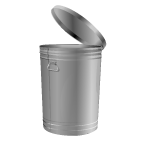Everyone understands the importance of search engine optimisation.
But not everyone seems to grasp the fact that it’s an ever-changing field of marketing. As search evolves so do the complex algorithms the search engines use to determine which sites are relevant to which search terms.
Why the constant changes?
That’s mainly down to the less than white SEO ‘experts’ out there who find a technique to boost their website’s rankings and exploit it.
For example, as a result of websites with poor content that wasn’t relevant, Google’s Panda came along. Hot on its heels was the mighty Penguin to battle against keyword stuffers, cloaking, duplicate content and those participating in link schemes.
In the world of SEO you have two choices: keep doing what you’ve been doing for years and watch your website disappear from view; or move with the times and adopt new techniques.
SEO Techniques to steer clear from
To get you on the right path, here are just a few old SEO techniques that should be consigned to the rubbish bin.
1. Keyword density
This is a phrase that should never be mentioned again.
If you’re not sure what it is, it’s a dreadful practice old SEOers once employed, claiming you have to have a certain percentage of keywords in your website copy in order get ranked for that particular search term.
Wrong.
If it were that simple, the world would be full of websites that were complete gibberish and only contained one or two phrases repeated again and again.
The right way to create effect SEO copywriting is by writing high quality content that is written naturally.
2. Numerous press releases
Online press release outlets were seen as a God send to many.
The result was numerous press releases that had absolutely no substance to them whatsoever being blasted across the web in the hope of attracting a back link or two.
The main problem with this is that you’re putting out substandard releases for the general public to see, which is hardly going to put your company in a good light.
There’s nothing wrong with issuing press releases, but only when you actually have some news to tell.
3. Content spinning
Once upon a time, marketers would write an article, spin it using some software and post it out to numerous websites. Worse still, they would send out the same article to hundreds of websites creating vast swathes of duplicate content.
That is such a bad idea.
If you want to put content out there make sure it’s original, of high quality and offers the reader something. After all, if you want to generate links, it has to be some pretty awesome content.
4. Meta tags
Once upon a time (there’s a pattern forming here) SEO was linked to your meta tags because they helped the search engines determine the relevance of your website. Surprise, surprise, this resulted in numerous SEOers stuffing their meta tags (they appear in the <head> section of your website’s code) with keywords.
The search engines are far cannier these days, and use other tags (e.g. title tags and alt tags) and the actual content of your website to determine what your web page is about.
As you can see, throughout the history of SEO someone finds a loophole and exploits it. That’s why it’s important you keep updated with the latest SEO techniques and news to make sure your efforts continue to bring you the results you want.






3 comments ↓
Insightful post!
It is good to see the back of spinning content etc.
However Google has also outlined that other forms of link building such as Directory submmisions are no longer of use!!
Another one could be writing articles with thin, rehashed content for the sake of a couple of links on a blog…
Another one to add to your list is writing articles with thin, rehashed content for the sake of a couple of links on a blog…
Leave a Comment